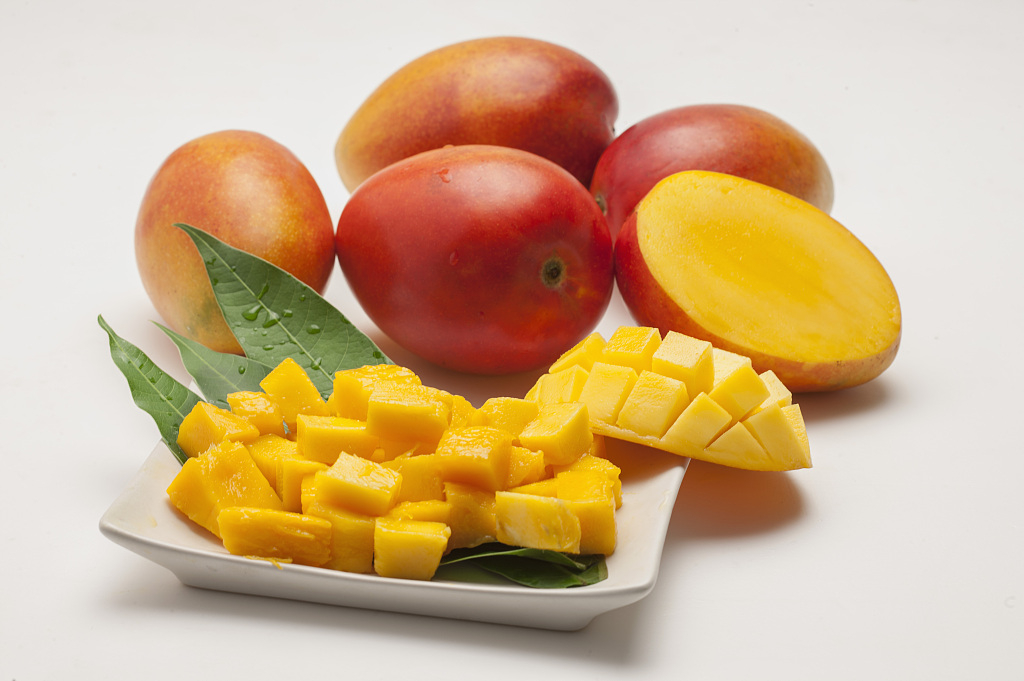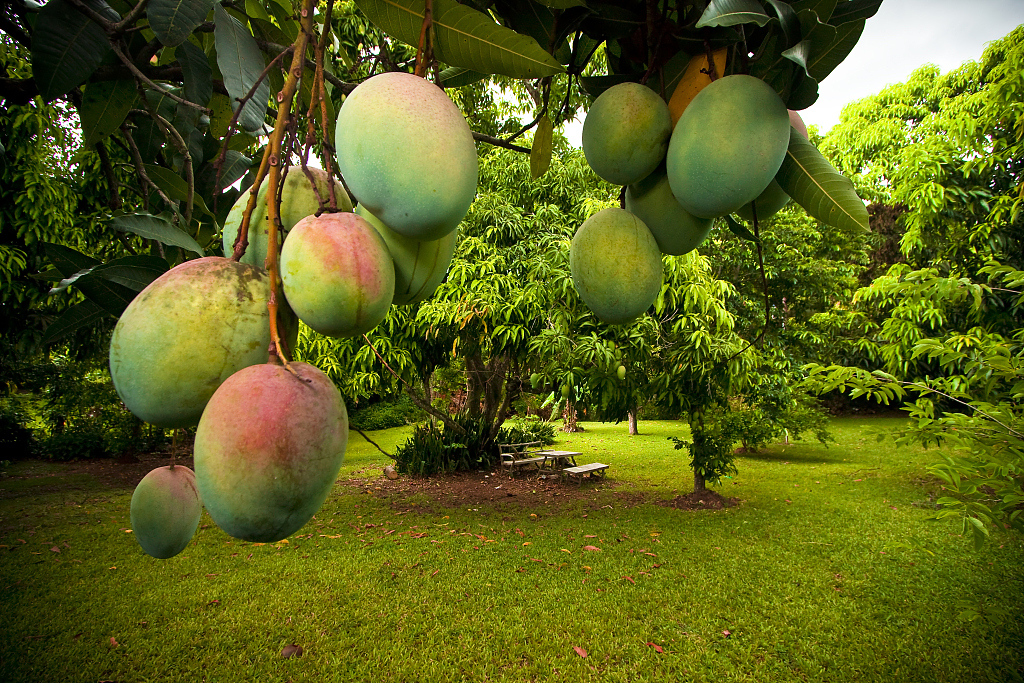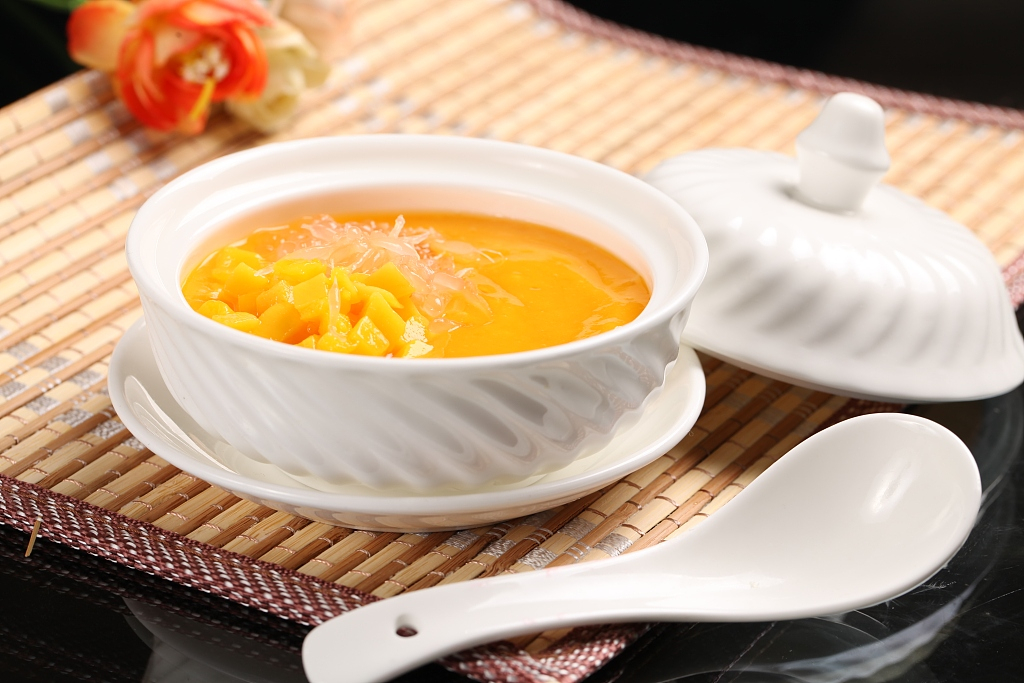Mango is one of the most popular tropical fruits, it's juicy, pulpy and sweet. Mango maniacs could be easily found traveling to countries like India and Malaysia during the harvest season just to enjoy the wide variety of mangoes. Not just these countries but China is also a major producer of delicious mangoes.

Juicy mangoes. /VCG Photo
Juicy mangoes. /VCG Photo
Mango was first introduced and cultivated in China about 1,300 years ago. Mango trees can tolerate a wide range of climatic conditions. The crop is successfully cultivated under conditions which vary from very hot, very humid to cool and dry, to very hot and arid.
Almost half of the world's mangoes are cultivated in India alone, with the second-largest source being China.

Mangoes in tree. /VCG Photo
Mangoes in tree. /VCG Photo
South China's Guangdong Province is the largest producer of mango in the country due to its tropical monsoon climate with long and hot summers.
Cantonese people not only view mango as a fruit, but they have also discovered many ways to cook it into delicious delicacies.

"Mango pomelo sago" is a popular Cantonese dessert. /VCG Photo
"Mango pomelo sago" is a popular Cantonese dessert. /VCG Photo
Leizhou City in south China's Guangdong Province is famous cultivating a special type of mango named "Tando," with more juicy, rich-flavored pulp and less fiber. This is because of the favorable climate and local soil that is filled with essential nutrition required for the crop to thrive.
By 2018, the Tando mango cultivation area reached 50,000 mu in total, with the annual production of over 50,000 tons. The harvest season lasts from late June to mid-August. If you want to grab a bite of Tando mango, don't forget to plan your trip to Guangdong Province in the next season.
From the wetlands along the coast to the dense rainforests hidden in the southwest of China, all boast an array of plant species. In this series, CGTN will go on a tour to learn about some of the most iconic flora in different provinces and see how they live in harmony with the local climate and topography.
(Cover photo via VCG, designed by CGTN's Li Jingjie)
(If you want to contribute and have specific expertise, please contact us at nature@cgtn.com)